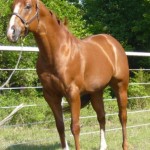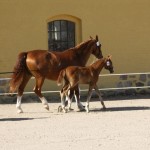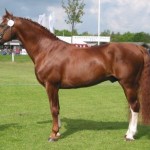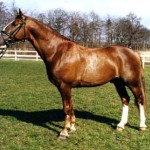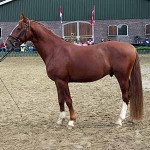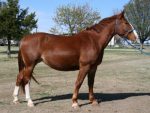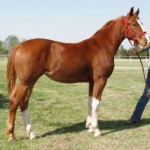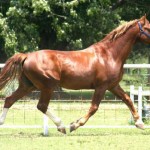Frederiksborg Horse
Frederiksborg, the oldest domestic horse breed in Denmark, though low in numbers today was greatly admired and well liked throughout the Renaissance as well as the Baroque periods. In the earliest stages, it was regarded as one of the best European studs used as a military charger, and a reliable carriage, as well as a school horse. Now the population of Frederiksborg horses undergoes a studbook selection process that helps choose the ideal breeding stock.
Frederiksborg Horse Pictures
- Frederiksborg Horse Images
- Frederiksborg Horse Mare and Foal
- Frederiksborg Horse Photos
- Frederiksborg Horse Pictures
- Frederiksborg Horse Stallion
- Frederiksborg Horse
- Frederiksborg Horse Stud
- Frederiksborg Horses
Quick Information
| Alternative Names | Frederiksborger |
| Common Nicknames | “Danish Horses” |
| Temperament/Personality | Calm, friendly, docile, intelligent, even-tempered |
| Physical Characteristics | Well-proportioned head with a wide muzzle, straight or convex profile, large, expressive eyes, pointed ears; medium length muscular neck that is arched to some extent; strong, broad, and well-pronounced withers; short and straight back with a broad, rounded croup; full, deep chest; sloping shoulder; strong, muscular legs with small and tough feet |
| Colors | Usually chestnuts with white markings; flaxen mane and tail; grays, palominos, buckskins, and bays are also possible |
| Common Use | Competitive equestrian sports like combined driving, show jumping, and dressage; ideal for amateur riders; good in harness |
| Lifespan/Life Expectancy | Usually long-lived with structural and reproductive soundness |
| Weight | 1300-1433 lbs (590-650 kg) |
| Height (size) | 15.1-16.1 hands (153.4-163.6 cm, 60.4-64.4 inches) |
| Health | Genetic disorders, physical weakness, and interbreeding due to its limited gene pool are the greatest medical concerns |
| Gaited | Expressive gaits with inherent self-carriage; it trots with long strides; walks in an open and diligent manner with a sufficiently controlled canter |
| Popular Traits | Strong, robust, attractive, trainable, keen working, agile; tough and hardy; has an athletic build |
| Feeding/Diet | Forages including grass and hay should comprise 50% of its diet by weight; if it is a hard working horse, the percentage of grain provided should be increased; the right balance of nutrients such as proteins, minerals, vitamins, carbohydrates, and water should be maintained |
| Blood Type | Warm |
| Country of Origin | Denmark |
| Ancestors | Neapolitan, Iberian, Andalusian horse; later Arabians and Norfolk Roadsters were introduced |
| Year/Time of Development | In the 16th century |
| Breed Information | Recognized and registered by the Frederiksborg Hesteavlsforeningen |
Video: Frederiksborg Stallion
History and Development
The origin of the Frederiksborger dates back to 1562 when the Royal Stud was founded under Frederik II of Denmark. By royal decree, the Iberian ancestors of the Andalusian and the Neapolitan horses were brought to the stud farm. As the Arabian and the Norfolk Roadster horses started gaining popularity, they were also chosen to be kept at the Royal Stud. The objective was to breed a horse that has the combined characteristics of a beautiful, stylish, and agile riding horse with supple action, and a large, strong carriage horse with consistency in appearance.
In both the 18th and 19th centuries, the breed became so popular that the horses had to be exported in huge numbers. However, its fame had an adverse effect as the royal horse farm was closed in 1839. Even though these horses were bred privately, their utility was reshaped by the requirements of the people, who started using them for pulling stagecoaches and in agricultural works. Efforts were made in 1939 to restore the breed by adding Oldenburgs, East Friesians, and Thoroughbreds. Later, Arabians were also used.
As the breeders used Swedish and German horses, many part-Frederiksborg mares were introduced into the breeding stock.
Interesting Facts
- Though the Danish Warmbloods usually have German pedigree, some may trace back their ancestry to the Frederiksborg horse.
- The Frederiksborger was used in the foundation of not just the Lipizzaner but also the Heavy Warmblood horses.
- These horses are always enthusiastic when it comes to jumping, and are not worried about knocking the rails.


